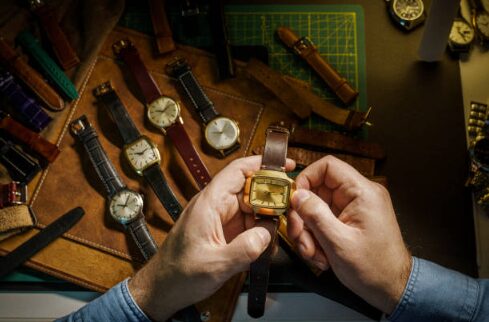How to Wind Vintage Watches Correctly: A Beginner’s Guide

Vintage watches have a charm that modern timepieces often struggle to replicate. Their craftsmanship, historical significance, and unique designs make them coveted pieces among collectors and everyday wearers alike. But owning a vintage watch isn’t just about aesthetics—it comes with responsibilities. Chief among them is understanding how to wind vintage watches properly to keep them running smoothly and protect their internal mechanisms for years to come.
In this beginner’s guide, we’ll walk you through why proper winding is important, how to do it correctly, common pitfalls to avoid, and tools like watch winders that can help maintain your vintage timepiece.
Why Proper Winding Is Crucial for Vintage Watches
Mechanical vintage watches rely on manual winding to keep time accurately. Unlike modern quartz or automatic models, many older watches lack batteries or self-winding features. Failing to wind them properly—or at all—can lead to inaccurate timekeeping or even internal damage.
More importantly, vintage watches are often delicate. The movement (or internal mechanism) in older timepieces includes components that have aged and may be more sensitive to over-winding or jerky handling. Consistent and careful winding ensures the longevity of these intricate machines.
How to Wind Vintage Watches: A Step-by-Step Guide
Winding a vintage watch correctly is easy once you know how. Here’s a step-by-step approach:
1. Remove the Watch from Your Wrist
Always remove the watch before winding. Winding it while it’s on your wrist can put unnecessary strain on the crown and internal components due to awkward angles.
2. Locate the Crown
The crown is the small knob usually found on the side of the watch. This is what you’ll use to wind the movement.
3. Set a Consistent Time for Winding
Pick a time each day to wind your watch. Ideally, morning is best, as it allows the watch to run optimally throughout the day.
4. Turn the Crown Gently and Slowly
Using your thumb and forefinger, turn the crown clockwise (away from you). Do this slowly and gently.
5. Count the Turns
Most vintage manual watches require 20 to 30 full turns. You’ll feel increasing resistance as you approach the full wind. Once you feel a natural stopping point, stop. Don’t force it—over-winding can damage the internal mechanism.
For more in-depth instructions, check this detailed guide on wind vintage watches.
Common Winding Mistakes Beginners Should Avoid
Even with the best intentions, beginners can make mistakes that compromise their vintage watches. Here are a few to steer clear of:
- Over-winding: Pushing beyond the resistance point can snap the mainspring.
- Winding on the wrist: This puts pressure on the stem and crown.
- Jerky or fast movements: Wind slowly to avoid stressing internal parts.
- Skipping days: Inconsistency leads to erratic timekeeping.
By avoiding these mistakes, you extend your watch’s lifespan and maintain its accuracy.
The Role of Watch Winders in Preserving Vintage Timepieces
While most vintage watches are manual, some later models feature automatic movements. If you own an automatic vintage watch, a watch winder can be a smart investment. It simulates wrist movement, keeping the watch running even when not in use.
Watch winders also reduce the need to reset the time and date each time you wear the watch. This minimizes the wear on the crown and movement from repeated manual adjustments.
If you’re looking for a reliable option, explore the best watch winder options that offer both function and aesthetic appeal.
Tips for Long-Term Vintage Watch Care
Beyond winding, here are a few maintenance tips to keep your vintage timepiece in top condition:
- Service Regularly: Have your watch checked by a professional every 3–5 years.
- Avoid Moisture and Magnetic Fields: These can affect performance or cause damage.
- Store Safely: Use padded watch boxes or winders to avoid scratches or shock.
- Keep It Clean: Wipe with a soft cloth after each wear to prevent buildup of sweat and grime.
Treat your vintage watch with care, and it will continue to serve as a reliable companion and a piece of history.
Conclusion
Winding a vintage watch may seem like a simple task, but doing it correctly makes a world of difference. It’s about more than keeping time—it’s about preserving craftsmanship and legacy. Whether you’re a seasoned collector or a newcomer to the world of horology, understanding how to wind vintage watches ensures your piece runs reliably and lasts for generations.





